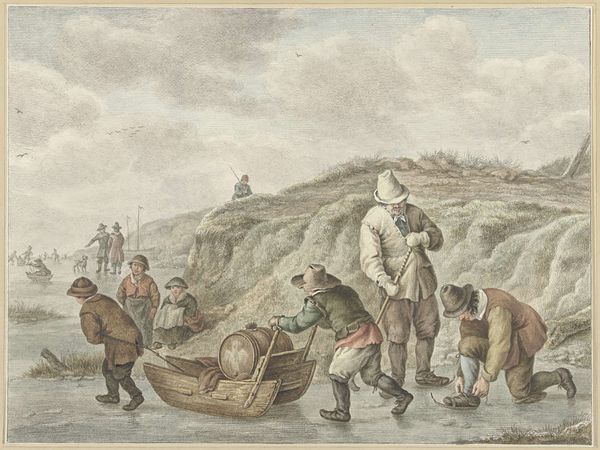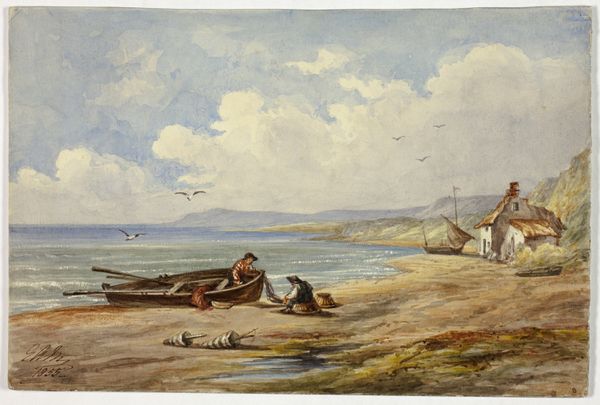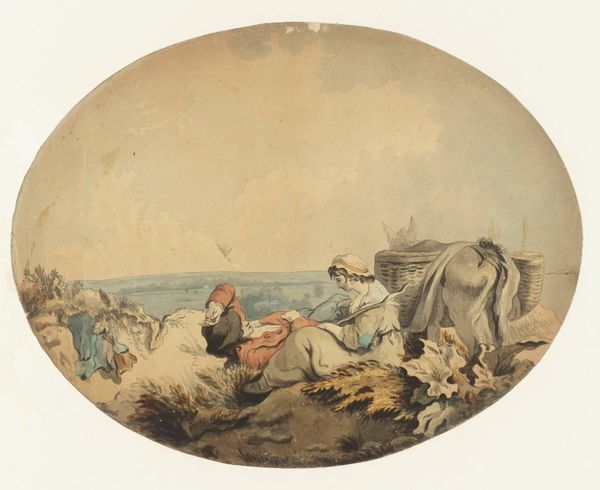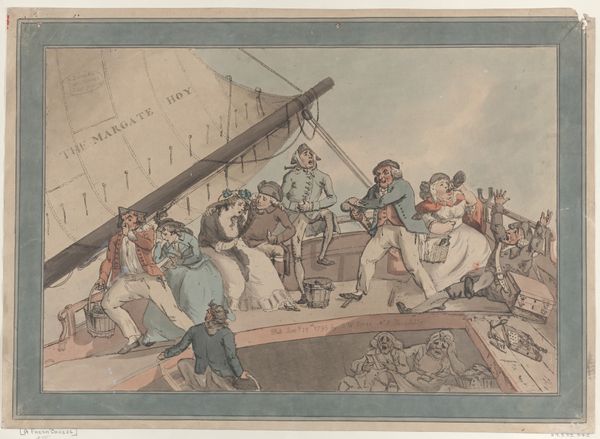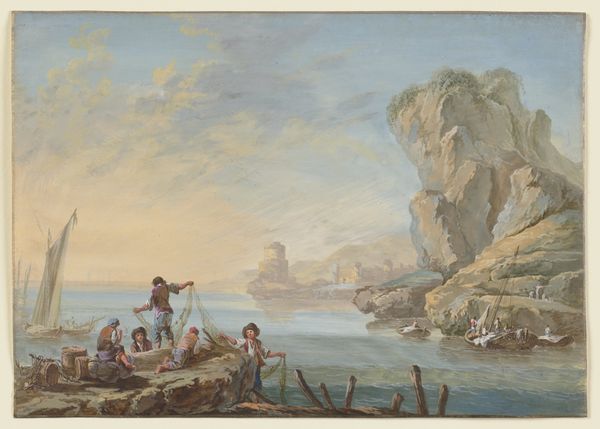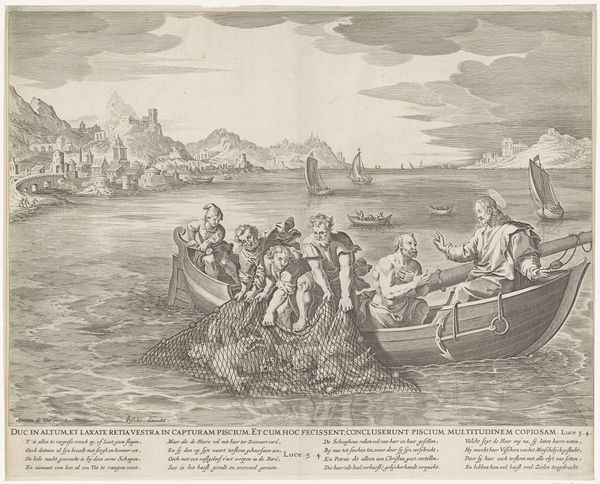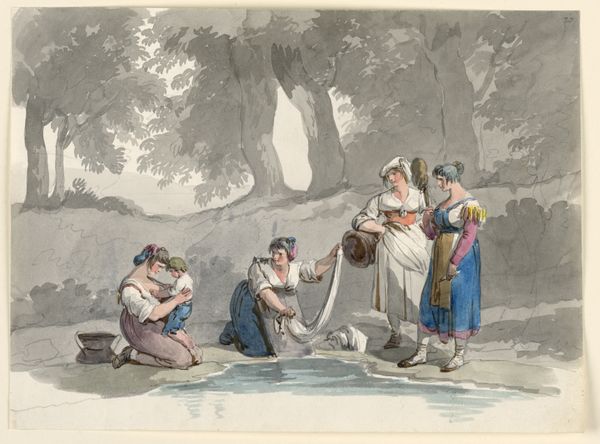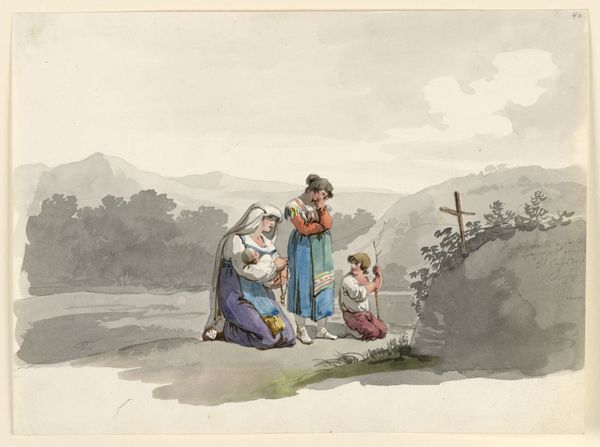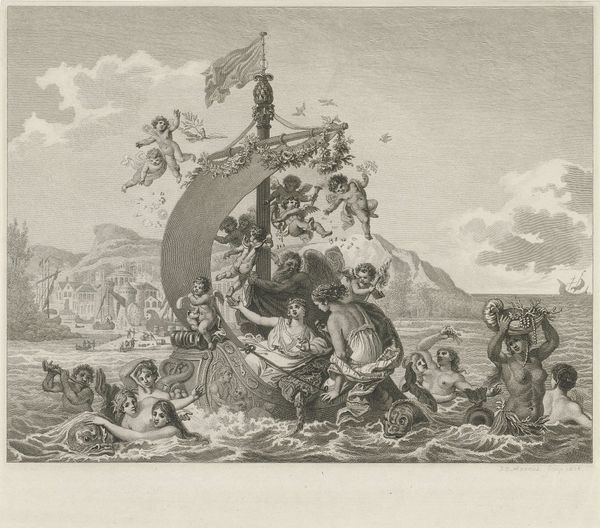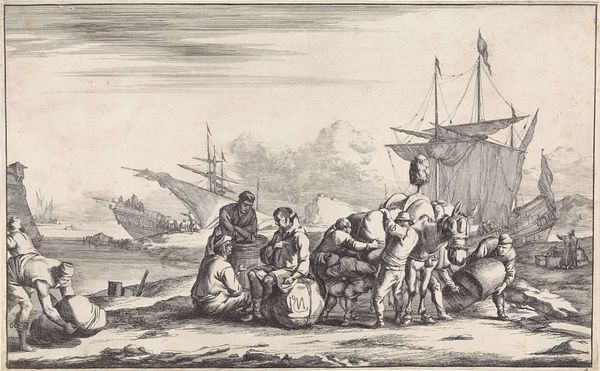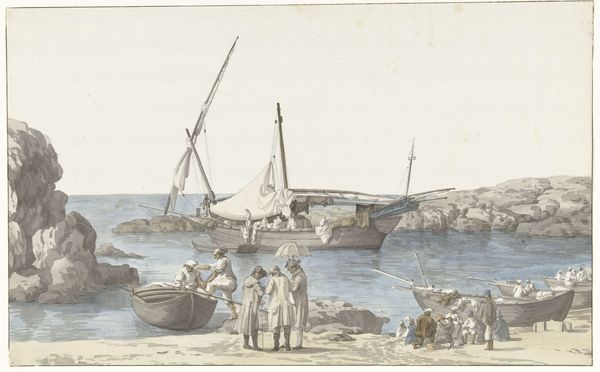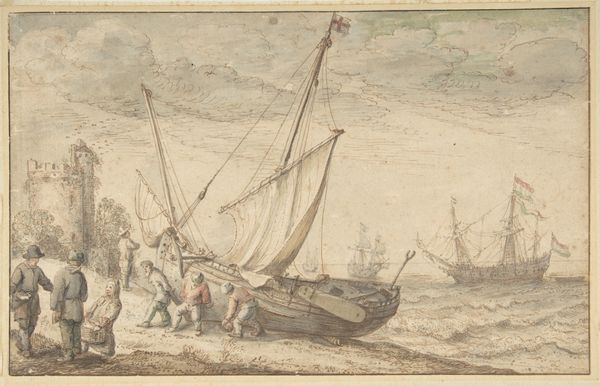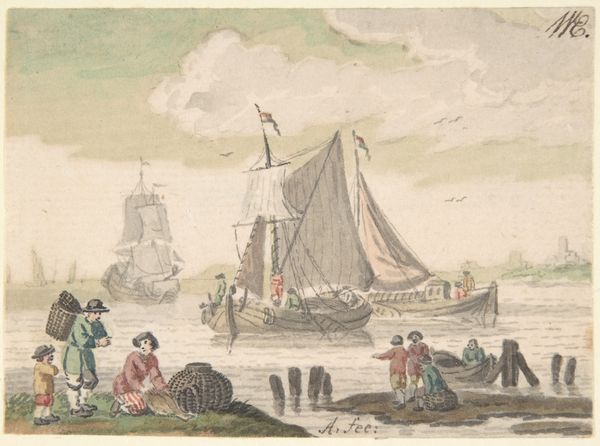
drawing, print, plein-air, paper, watercolor
#
gouache
#
drawing
# print
#
plein-air
#
landscape
#
paper
#
handmade artwork painting
#
watercolor
#
coloured pencil
#
england
#
water
#
painting painterly
#
watercolour illustration
#
genre-painting
#
mixed media
#
watercolor
#
realism
Dimensions: 176 mm × 259 mm
Copyright: Public Domain
Curator: Look at the women! They create a rhythmic, almost dance-like visual as they work. Editor: Indeed, this piece, titled "Washerwoman at Nice," created around 1842, captures a scene of daily life in France through a distinctly English lens, which interests me, given Murray's heritage. It’s executed with watercolor, gouache, colored pencil, and other mixed media on paper. Curator: Mixed media enlivens the composition through distinct layering and allows a range of emotional tones, a sentimental vision of labor, even romanticized. The clothing carries so much symbolic meaning through its form and function! Look at the layers: shawls, bonnets. Note the significance of each layer as an indicator of feminine archetypes or roles in daily lives. It almost hints at a narrative about work and women. Editor: Yes, Murray's "Washerwoman at Nice" sits at an interesting point in history, reflecting the societal value—or perhaps undervaluing—of women’s work. It was part of a broader artistic movement towards Realism. These genre paintings highlight ordinary moments and offer glimpses into various social strata. Murray seemed taken by the scenery. But look more closely! She depicts the communal nature of the work. Women are bound together in a visual pattern: heads leaning and connecting with the adjacent women. This creates a dialogue among them, making them stronger in unity than as solitary figures. Curator: I agree. This reflects their roles in domestic spaces and societal structure and carries significant cultural meaning and unspoken rules! The river functions as a visual artery. Consider the relationship between cleanliness and spiritual purity or moral health. What deeper psychological undercurrents were the artist implying? Editor: Fascinating insights! In art history, representations such as this allowed everyday women entry into a painting in the public sphere. It made commentary on the value of labour that society may have otherwise dismissed. A subtle nod of appreciation in the politics of imagery in 19th century France. Curator: Absolutely, and exploring these artworks today bridges the space between cultural memory and our current cultural framework and ideals. It prompts me to contemplate how those visual symbols resonate across time. Editor: Indeed. We can consider how artists reflect and shape their world, how these seemingly quiet scenes spark meaningful dialogue on the relationship of women in society then and now.
Comments
No comments
Be the first to comment and join the conversation on the ultimate creative platform.
